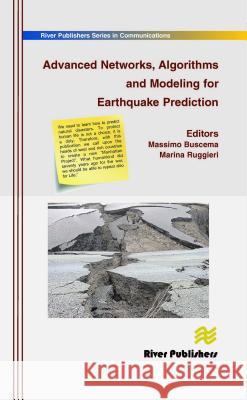Advanced Networks, Algorithms and Modeling for Earthquake Prediction » książka
Advanced Networks, Algorithms and Modeling for Earthquake Prediction
ISBN-13: 9788792329578 / Angielski / Twarda / 2011 / 284 str.
Advanced Networks, Algorithms and Modeling for Earthquake Prediction
ISBN-13: 9788792329578 / Angielski / Twarda / 2011 / 284 str.
(netto: 579,50 VAT: 5%)
Najniższa cena z 30 dni: 603,49
ok. 22 dni roboczych
Bez gwarancji dostawy przed świętami
Darmowa dostawa!
Imagination depicts earthquakes as mysterious and magical events, but, as scientists, we also have to consider them from another, techincal perspective: they are natural phenomena that evolve with time and depend on a number of variables. With this in mind, we can start investigating the simplest and, at the same time, the most complex question: are earthquakes predictable?
If the answer is affirmative, what could the role of the extremely mature Information and Communication Technology (ICT) be in setting up an effective prediction process? How can artificial Intelligence Algorithms contribute to the picture?
Advanced Networks, Algorithms and Modeling for Earthquake Prediction presents our vision about the above matter. It is organized into three parts. Part 1 frames the possible use of ICT and Artificial Intelligence in dealing with earthquake-related Disaster Ahead management (DAM). Part 2 presents modeling tools for the earthquake issue and proposes possible ICT tools for supporting the earthquake DAM. Part 3 presents an experimental network for earthquake DAM based on communications and navigation (GNSS) tools.











